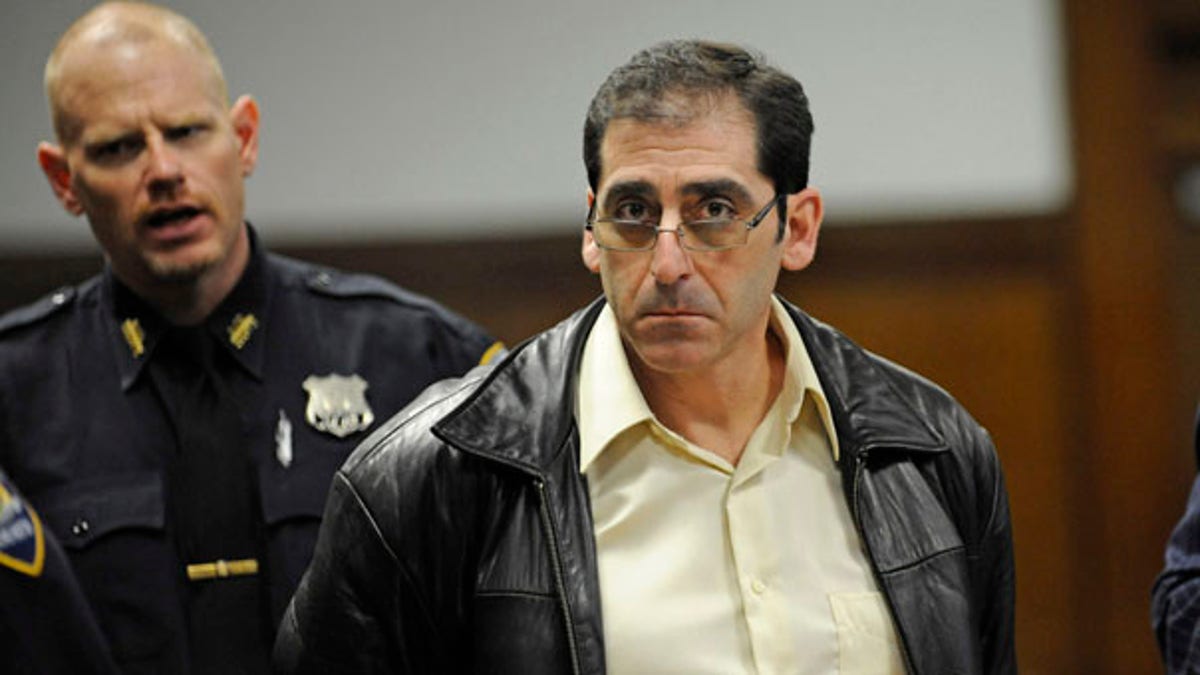
FILE: Construction crane rigger William Rapetti appears during his indictment in Manhattan criminal court in New York on manslaughter and other charges stemming from a March 15, 2008 crane collapse in Manhattan that killed seven people and injured two dozen. A judge acquitted Rapetti of all charges. (AP)
NEW YORK -- A crane rigger was acquitted Thursday of manslaughter charges stemming from the collapse of a New York City crane in 2008, a disaster that killed six construction workers and a tourist, hurt two dozen others and left a swath of damage in midtown Manhattan.
A judge delivered the verdict in the trial of William Rapetti, who was also acquitted of failing to file some city business taxes. He was the only person to face criminal charges in the collapse, which occurred near the U.N. headquarters.
Prosecutors say Rapetti did a recklessly inadequate job of securing the nearly 200-foot crane as it was being extended upward.
Rapetti's lawyer said that the rigger did his work carefully, but that the crane was unsteady because of engineering decisions and shoddy welding that weren't Rapetti's responsibility. Rapetti declined a jury.
The accident -- and a second New York crane collapse that killed two people two months later -- raised questions about crane safety around the country, spurring new inspections and other measures from New York to Chicago to Dallas.
The verdict came after a nearly monthlong trial that ranged from technical details of crane design to emotional accounts from survivors of the disaster, including a man trapped in the rubble for about four hours before being rescued. State Supreme Court Justice Roger Hayes even took a field trip to see the wreckage in a police storage lot.
Rapetti showed no reaction as the verdict was read, but afterward, the red-eyed rigger hugged his sobbing wife at the courtroom rail. The seven manslaughter counts against him were punishable by a total of as many as 15 years in prison. He declined to comment as he left court.
Rapetti's company, Rapetti Rigging Services Inc., was also charged but acquitted.
Prosecutors, city building officials and the federal Occupational Safety and Health Administration attributed the collapse to the failure of four heavy-duty polyester straps that Rapetti and his crew were using temporarily to fasten a more than 11,000-pound steel collar around the crane on March 15, 2008. The collar was part of an assembly designed to link the crane to the condominium tower it was helping to build.
The crane manufacturer called for using eight of the $50 straps for the job, but Rapetti used four -- one seriously worn -- even though six new straps were provided to him, according to prosecutors and testimony from others involved in the construction. He also didn't pad the straps to keep them from fraying against the crane's metal edges, a precaution outlined on the straps' own warning label.
"He disregarded every standard that applied to this job," Manhattan Assistant District Attorney Deborah Hickey said in a closing argument.
The worn strap broke, overloading the remaining straps and breaking them, prosecutors said. The collar then shot down the crane, rupturing other collar assemblies farther down and destabilizing the crane, the investigations found.
Rapetti, who was injured in the collapse himself, didn't testify. His lawyers argued that the rigger was keenly aware of safety and followed accepted norms in using the straps, and that they weren't to blame for the collapse.
"When you look at the complete picture ... it's blatantly obvious that there was no recklessness by Mr. Rapetti," defense lawyer Arthur Aidala said during his summation.
An engineer hired by Rapetti's lawyers suggested the rig fell because of welding and other problems in metal beams that were part of the collar assemblies. Under his theory, one of the beams failed, tipping the crane -- which wasn't anchored to the ground as cranes commonly are, according to the engineer who designed it. The design relied instead on the collars and beams to keep the crane in place.
The engineer, Peter Stroh, testified that he believed the design was safe nonetheless, and that he had ordered some problems with the beams to be fixed.
About 60 to 80 people die in crane-related incidents nationwide in an average year, according to OSHA, which doesn't have figures on the deadliest collapses. Others include a 1989 crane collapse in San Francisco that killed five people and a July 2008 crane collapse in Houston that took four lives.





















